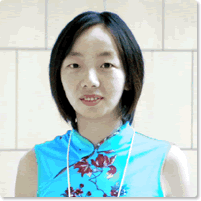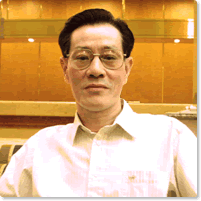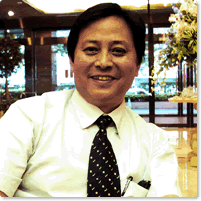- Tao Qingmei
China Social Sciences Academy, Culture Dept., Comparative Culture Center
The Chinese theater world has changed a lot over the last 20 years. The contents of these changes are very complex, but you can divide the movements roughly between those occurring up until 1990 and those occurring since. While there had been some process of cultural development from the time of the adoption of the government’s reform and liberalization policies up until 1990, the Chinese at that time still had very little exposure to Western arts, and the performing arts was a field where virtually no foreign influence could be seen.
Entering the ’90s, however, new movements began to appear. One of the characteristics of this change was that people from the general public began getting actively involved in theater in increasing numbers. The birth of these new theater groups arising from the general public with no government sponsorship or affiliation was a result of the fact that up until 1990 people had the desire to see plays but found there were no plays worth seeing. As a result, people took action and began thinking about what theater could and should be.
When these new theater companies, which you might call “private sector” companies, became really active around the year 2000, we saw the government beginning to support them actively. Along with this boom in private-sector theater, we also saw the appearance of small-theater productions in the various regions of the country. And, the government began to support these experimental theater efforts, too.
This support from the public sector took the form not only of funding but also new attempts by the government–affiliated theater companies to undertake experimental theater productions of their own. Of course, owing to the fact that they are government–affiliated companies, there were some limitations on what they would undertake and the orientation tended to be toward public entertainment rather than art theater. But, it is significant that they were beginning to create new productions to cater to a public that was anxious to see new theatrical works.
One of the important stimulants behind this movement was the activities of the former government–affiliated theater company director Bo Sen. It was the recognition he won by actively participating in international theater arts festivals with a private-sector company that made the government decide to lend its support. This recognition he won has been a very big factor in the recent changes we are seeing.
One of the important works to emerge in China’s small-theater scene in recent years is the play “Tianshang Renjian (People of the Heavens)” first performed in 2001. This work was so successful that the name of the play became the name of the company, and from 2001 to 2003 some 50 performances were held around China. For a small-theater production in China, this number was truly amazing. The production was financed personally by Mu Tou, who also wrote the play and did the directing. The budget was kept low, with the production cost for the first performance coming to only 80,000 yuan (approx. 100,000 USD). Return performance followed return performance until it set a record for the largest total audience draw for a Chinese small-theater production by its fourth re-staging in March of 2004.
There is a possibility that successful Chinese small-theater productions like this could be taken overseas, but I believe some re-writing of the script and re-staging to accommodate foreign audiences would be necessary first.
We have also been inviting some Japanese small-theater productions for performance in China, but I believe that the important thing for this kind of exchange in the performing arts is that it be done on a continuing basis. Also, I don’t think we should be trying to mount productions that recover the investment with one staging. If the first performance doesn’t break even, we should be able to think about what to do for a second and maybe a third performance. I think it is important that we take a stance where we are prepared to plan longer-run performances and exchange productions on a continuing basis.
Tao Qingmei / Wu Weiqing / Zhang Jinyuan
A “China Impact in the arts”
The performing arts in a privatizing China

Tao Qingmei
China Social Sciences Academy, Culture Dept., Comparative Culture Center
While active as a theater critic, Tao has published numerous studies and books in China on the subject of theater. She is a young researcher specializing particularly in modern Chinese theater. At TPAM 2004 she was guest lecturer at the seminar “Potential of the Chinese Market” held as part of the “East Asia Network” program.

Wu Weiqing
Guangdong Province Arts Research Institute
As Director of the Guangdong Provincial Arts Research Institute, Wu Weiqing came to TPAM 2004 to make a presentation titled “The Status of Performing Arts in Guangdong Province,” which talked about the movement toward privatization in the performing arts in China’s regional capitals. In addition to his role as the Institute’s director, Mr. Wu is president and chief editor of the Guangdong Arts Magazine Company and an active arts critic. All these activities make him a key person for information about the performing arts in Guangzhou.

Zhang Jinyuan
TianJin People’s Art Theatre
A veteran actor who is active not only in stage performance but also film and television. As Assistant Director of the People’s Art Theater Tianjin, he is a hands-on educator of young talent as well as being active in improving the theater environment and infrastructure while working also as a stage producer and writer.
- Wu Weiqing
Guangdong Province Arts Research Institute
The Guangdong Province Arts Research Institute is an information hub for all kinds of information about the arts in Guangdong Province. My personal experience running the Guangdong Arts Magazine Company and publishing an arts magazine makes me keenly aware of the importance of the job of the gathering and disseminating information. As part of our efforts at the Institute to make information more accessible to people, we launched our “Arts Data Bank” as China’s first arts related database. After three years of preparatory work, our “Guangdong Culture Website” went on line in 1999.
This database divides information into nine categories, such as Music, Dance, Artists and Theater Theory, and makes it possible to run online searches for information from all of the arts related material we have compiled at our Institute. The materials available on this site range from research papers on the theory and methodology in the performing arts to reviews of productions and recommendations introducing new creative works, reports and analysis on various cultural phenomena in China and abroad, as well as information about the Guangdong culture and arts scene.
To launch this site we invested about one million yuan (approx. 120,000 USD), and since then we have spent an additional 300~500 thousand yuan in way of operating cost. Presently, the site is only in Chinese, but in the future I would like to see us making information about the unique arts of Guangdong province available not only throughout China but overseas as well.
Guangzhou has become a very advanced commercial center among Chinese cities, which means that works of art having commercial elements are readily received and appreciated. For example, in the music theater segment including opera and musicals, we have seen a very successful production of Japan’s Takarazuka theater (10 performances) in Guangzhou in 2000. I saw the performance myself and was very moved by it. In the hardware aspects of staging such performances, however, China still has some catching up to do.
In September of 2002, our Institute invited Japan’s Toen Theater Company to China for a series of performances of two productions in the cities of Shanghai, Nanjing and Guangzhou. What made the tour possible was the fact that one of these two productions was an experimental work in which we had one of the directors affiliated with our Institute, Wang Jiana, directed the Japanese company in a performance of a Chinese play.
Today, directors like Wang are running their own “theater workshop” studios where they are involved in creating their own independently financed productions, which is a new and revolutionary development here in China. We want to give our full support to help strengthen these types of activities from now on. We also want to make efforts to answer market needs by encouraging the participation of new investors and cultivating an audience for the performing arts and generally working to raise the overall level of arts in Guangdong province.
- Zhang Jinyuan
TianJin People’s Art Theatre
The People’s Art Theater Tianjin was founded in 1951 and now has a proud history of 53 years of accomplishment as a national theater company. There are presently more than 200 specialized members in the company, comprising 56 actors, 42 stage technicians, 20 involved in production, plus some 108 writers and five directors. Up until now, the company has staged performances of over 280 plays, ranging from full-scale productions for large theaters to productions of contemporary and classic plays for smaller theater spaces. Particularly famous are the works of the playwright Tsao Yu, a native of Tianjin who is known as the father of modern Chinese theater. Among the plays in our company’s repertoire are representative works of Tsao Yu like “Lei Yu” (Thunderstorm) and “Ri Chu” (Sunrise) first performed in the 1930s. In our performances of these works we always attempt to introduce innovative new elements while preserving the important essences of the original work and its period.
Regional theater has long been a vigorous art form in China, and we find unique theater companies and plays in each of the country’s regions. Our People’s Art Theater Tianjin is one of the best known among these regional companies, and we proudly recognize the fact that in terms of influence on a nationwide scale, our company is second only to those of Beijing and Shanghai. It is probably a little-known fact that the modern Chinese theater that took root in the 1920s and ’30s actually drew its original inspiration directly from modern Japanese theater. As a port city, Tianjin had lively cultural exchange with Japan at the time. We are told that Tianjin thus became the port of entry for this modern theater movement, which subsequently spread to other parts of the country after taking root in Tianjin as modern Chinese theater. Once the movement spread around the country, we began to see original plays being written in each of the main regional cities. These works naturally drew their subjects from the traditions and culture of their localities. In addition to this, we saw the emergence of very popular theater cultures in the other major port cities of Shanghai and Guangzhou after the founding of the People’s Republic of China (in 1949). However, the plays that were born in these large metropolises rarely had anything that could be considered a regional flavor.
At our company we produce two types of plays. One is plays written and performed in accordance with government policies. The other type is plays that we produce independently. Of these two types together we mount about five productions a year. It is our company’s independent productions that I would very much like to stage performances of overseas. Presently, Tianjin has Sister City Relationships with the three Japanese port cities of Chiba, Yokkaichi and Kobe, but in fact, there is very little cultural exchange going on. I was pleased to meet people from Chiba city here at the TPAM event, but without more mutual exchange of information there is little that we can do.
Tianjin is now in the midst of a construction boom, not only in the area of public cultural facilities but also in the general housing industry. I believe that the growing number of facilities provide an opportunity to present not only more theater but works in all types of art media in Tianjin today. One of the big advantages of a public company like ours is that it is easier for us to get government support. Also, since we have a large number of members, staff and the necessary performance facilities, I would like to see even greater use being made of them. Cooperation with the tourist industry is another factor that I think can be important in increasing the number of performances staged yearly. In China today, the government will give us directives to hold performances at times, but there is no government interference with the projects we initiate independently. Since we are a public company, it can be counter-productive to worry too much about generating income. I believe that our primary mission is to have an impact on the theater world here in China and also overseas if possible. To do this, I believe that we must make concerted efforts to nurture a young generation of theater-goers here in China. Ideally, we should try to win loyal theater-going populations in accordance with the population size of each regional city. There are still many college students who go through their four years of college without once seeing a modern theater production. Many may have some form of contact with traditional Chinese theater while growing up, but the audience for modern theater remains undeveloped. As we work to solve these issues, I believe that it is time for those of us involved in theater, both in China and Japan, to take the important first steps toward building real cultural exchange in the theater arts between our two countries.
Related Tags

